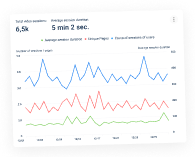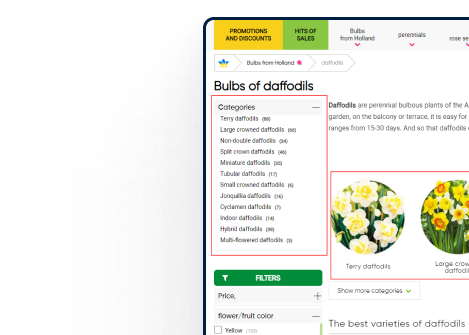
Usability auditing with the Plerdy tool is a comprehensive expert assessment of your website based on a profound study of user behavior registered on it. Plerdy will provide you with crucial data based on which you will be able to run an efficient usability audit of your website, identify and fix SEO issues, and subsequently lead it to higher positions in search.
Thus, you'll compile a list of flaws in your website interface, navigation, and conversion path that can eventually affect its micro and macro conversion rates.
Run the Plerdy toolTrusted by some of the world's largest enterprises









So, it’s high time for you to stop losing 99% of potential clients due to being unaware of your website users’ behavior patterns and needs.

Then your website definitely needs a usability audit based on the useful data from Plerdy. A website UX audit is strongly recommended to boost online sales.
Get an 80% increase in sales from your website after UX auditing with the Plerdy tools.
To understand the feasibility of the UX audit and know how to run further optimization properly, consider the most common hypotheses about the problems occurring on a website:
The categories audited on this website are duplicated though designed differently. One of these category boxes (most likely the one on the left) is used less often than the other.
Solution: the category menu that gets fewer clicks should be removed; the one with the images should remain since it attracts more clicks.

Because of SEO text and a large category block with images at the top of the page, only 32% of the users scroll down to the product list.
Solution: Although this audited category has more clicks than the side one, it should be removed as 68% of the visitors leave the page because they cannot find the products immediately.

The most widespread problems that require a usability audit:

The conversion rate in the sales funnel is too low

Unsatisfactory or dropping sales

Any "anomalies" in user behavior registered on the website

A significant decline in all indicators compared to the previous year

The price of attracting a new customer is too high

Low average check
A full usability audit of your website using the Plerdy tool will likely consist of 7 stages. Each step of the audit aims to find the maximum number of errors, even the smallest ones, to improve the efficiency of your website or online store. Follow our guide on the audit stages below, analyzing the Plerdy auditing data to identify and fix SEO issues on your website.
By eliminating the identified issues on your website with the help of the Plerdy tool, you will significantly improve its current state and attract more target traffic.
Here are bright examples of how to do website auditing based on the data received from Plerdy. Familiarize yourself with them to be able to conduct an efficient website audit by yourself:
Just like we analyzed the described websites, you can run an SEO audit of your own website using the detailed data collected by the Plerdy tools.
Run the Plerdy tool ?Business Development
Lead at Plerdy

An eCommerce website with sports goods.This video illustrates how you can use the Plerdy data for efficient UX&SEO website auditing.
A Danish website dedicated to cars. Watch which results of its UX&SEO auditing we got after analyzing the desktop traffic on its Home and Blog pages here.
A website of the 3D architectural solutions provider. We analyzed the UX issues on its Home and Gallery pages. Also, the SEO-Checker and Session Replay tools enabled us to identify weak points in their website’s SEO.
A website dedicated to sports gambling. The Plerdy tools have collected all the necessary SEO data to reveal UX issues on the website’s desktop and mobile versions. Watch the video to learn how to apply our data for UX auditing of your website by yourself.
A website representing an efficient CRM business tool. Here, you can view the website audit results based on the analysis of its Home, Features, Pricing, Login, and Contact web pages.
An online magazine about animals and an eCommerce website with books about them. Find out what SEO issues the heatmap analysis of its homepage has revealed from the video.
An eCommerce website selling flasks for water. When auditing it for UX&SEO issues, we thoroughly studied the Home, Shop and Product pages. Notably, we paid attention to both desktop and mobile versions of the website.
A website all about traveling. The Plerdy software has collected crucial data from its Home and Events pages. See how it can be interpreted in the audit.
Plerdy provides not only efficient tools to run a website UX auditing but also handy plugins that support the process.
This Full Page Screen Capture & Visual Feedback Tool is popular on the market since it enables you to take full-page screenshots and captures. Thus, you can share them and maintain meaningful communication with colleagues when performing the audit and deciding on how to run further search engine optimization.

You can use this Plerdy SEO Checker Chrome extension to analyze SEO issues on your website, saving time and effort. What makes Serpstat an extremely helpful tool is that you can run an SEO audit of your market competitors’ websites with its help.
Install for Chrome
Content for UX designers, SEO specialists, and business owners





